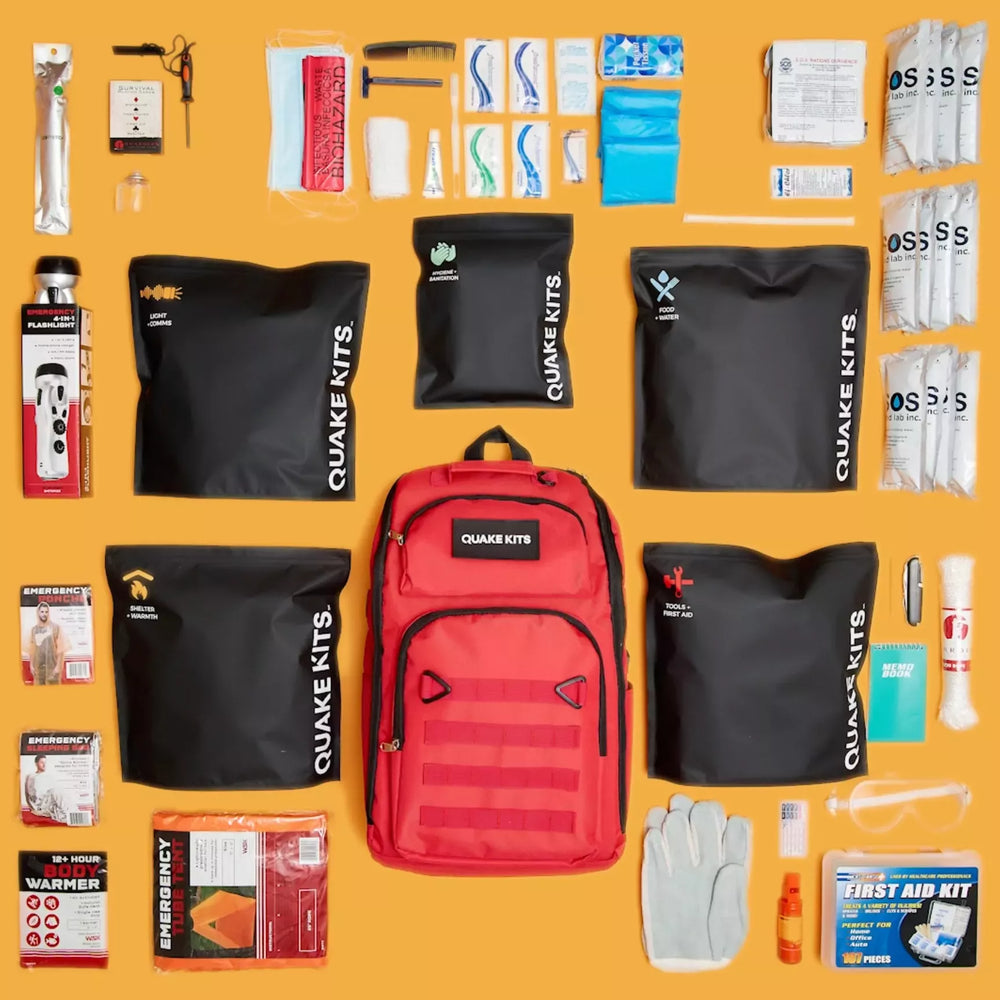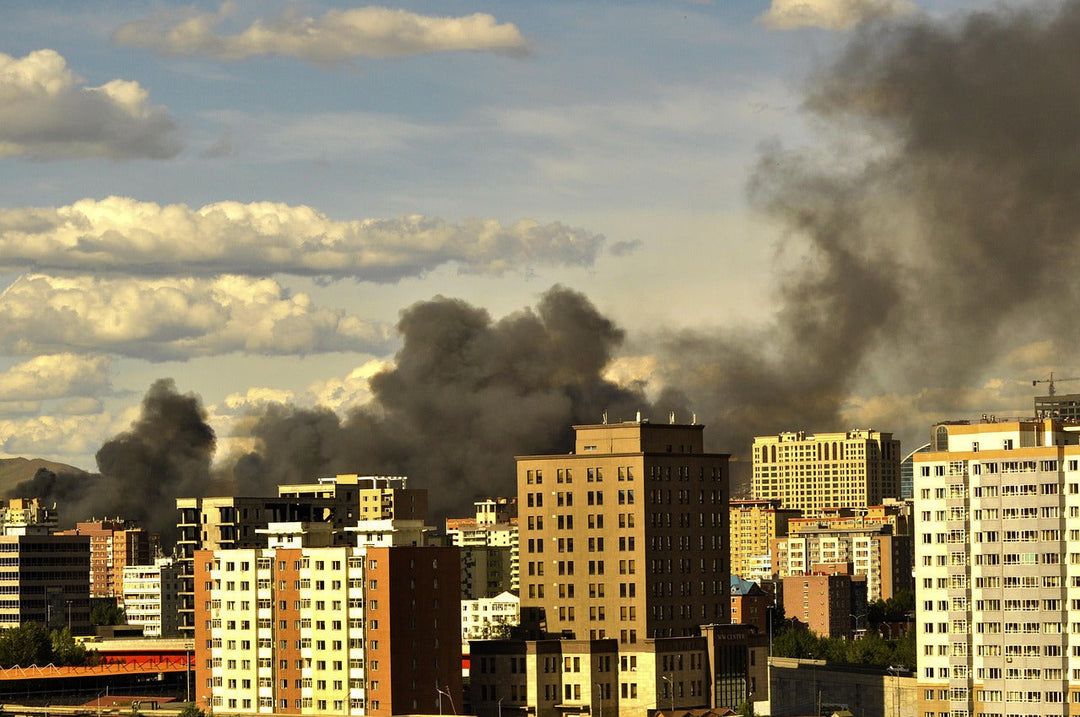Cómo iniciar tu preparación para 2025: Una guía paso a paso
Cómo iniciar tu preparación para 2025: Una guía paso a paso
En materia de preparación para emergencias, el nuevo año es el momento ideal para comprometerse a prepararse para cualquier desafío que pueda surgir. Tanto si es principiante como si busca perfeccionar sus planes de emergencia, la clave está en tomar medidas concretas para desarrollar una estrategia integral de preparación. A continuación, exploraremos maneras sencillas pero efectivas de comenzar su camino hacia la preparación en 2025.
¿Por qué empezar ahora?
Los desastres pueden ocurrir sin previo aviso, y estar preparado te brinda la confianza y los recursos para protegerte a ti y a tus seres queridos. Desde desastres naturales como terremotos y huracanes hasta cortes de energía e interrupciones en la cadena de suministro, planificar con anticipación puede ahorrar tiempo, estrés e incluso vidas.

Paso 1: Crea un kit básico de emergencia
Tu prioridad principal debe ser preparar un kit de emergencia adaptado a las necesidades de tu hogar. Esto es lo que debes incluir:
Elementos esenciales para empezar
- Agua: Calcule un galón por persona al día durante al menos tres días. Considere la posibilidad de añadir filtros de agua portátiles , bolsas de agua y/o pastillas potabilizadoras .
- Alimentos: Abastécete de productos no perecederos y fáciles de preparar, como conservas, comidas liofilizadas , raciones de emergencia y barritas energéticas .
- Botiquín de primeros auxilios: Un botiquín bien equipado con vendas, antisépticos y cualquier medicamento recetado necesario.
- Iluminación y energía: Linternas , faroles y baterías adicionales. Cargadores manuales o solares para dispositivos.
- Refugio y abrigo: Mantas térmicas de emergencia , una lona y una tienda de campaña compacta en caso de que necesite evacuar.
También puedes considerar un kit Quake premontado y totalmente equipado con todos los elementos esenciales ya incluidos.

Personaliza tu kit
Ten en cuenta las necesidades específicas de tu hogar:
- Bebés: Leche de fórmula, pañales y toallitas húmedas.
- Necesidades médicas: Gafas de repuesto, pilas para audífonos o medicamentos específicos.
- Mascotas: Alimento, agua y suministros para tus amigos peludos. Las mascotas también son parte de la familia, por eso en Quake Kits no escatimamos en lo que necesitan los gatos y los perros .

Paso 2: Elabore un plan familiar de emergencia
Un plan de emergencia sólido garantiza que todos los miembros de su hogar sepan qué hacer durante una crisis.
Componentes clave
-
Plan de comunicación:
- Comparta los contactos clave, incluyendo una persona designada fuera de la ciudad para recibir actualizaciones.
- Mantén una lista escrita de números de teléfono en caso de que se agoten las baterías o se produzcan cortes en Internet.
-
Rutas de evacuación:
- Planifique varias rutas de salida de su casa y vecindario.
- Identificar refugios locales y zonas seguras.
-
Puntos de encuentro:
- Elige un punto cercano y una ubicación alternativa más lejana en caso de que os separéis.
-
Ejercicios de práctica:
- Ensaya tu plan con regularidad para que todos conozcan su papel.

Paso 3: Manténgase informado
Estar informado es fundamental. En 2025, aproveche tanto las herramientas tradicionales como las modernas para mantenerse al día durante las emergencias.
Fuentes en las que confiar
- Alertas meteorológicas: Regístrese para recibir notificaciones del Servicio Meteorológico Nacional o de las autoridades locales.
- Radios de emergencia: Una radio meteorológica de la NOAA puede proporcionar actualizaciones críticas cuando las redes celulares están caídas.
- Recursos comunitarios: Siga a las agencias locales de gestión de emergencias en las redes sociales para obtener actualizaciones en tiempo real.
Paso 4: Desarrollar habilidades clave de supervivencia
La preparación no se trata solo de suministros, sino también de conocimientos. Aprender técnicas de supervivencia puede marcar la diferencia en una crisis.
Habilidades principales para aprender
- Purificación del agua : Utilice filtros y purificadores para garantizar agua potable segura.
- Primeros auxilios básicos: Consigue un botiquín de primeros auxilios básico o incluso inscríbete en un curso para aprender RCP y otras técnicas que salvan vidas.
- Encendido de fuego: Comprenda cómo encender un fuego de forma segura para calentarse o cocinar en caso de emergencia.
- Navegación: Aprende a leer mapas y a usar una brújula en caso de que no haya GPS disponible.

Paso 5: Establezca una rutina de preparación
La preparación no es una tarea puntual, sino un compromiso continuo.
Objetivos mensuales
- Rote los suministros de alimentos y agua para mantenerlos frescos.
- Prueba tu equipo de emergencia (linternas, radios, baterías).
- Actualiza tu plan familiar para reflejar cualquier cambio (nuevos trabajos, escuelas o mascotas).
Control anual
- Reemplace los artículos caducados de su kit.
- Reevalúa tus necesidades en función del crecimiento familiar o de los cambios en la salud.
- Amplíe sus habilidades con una nueva clase o taller.
TL;DR
Iniciar tu preparación para emergencias en 2025 se trata de dar pequeños pasos deliberados. Comienza por armar un kit básico de emergencia con agua, alimentos, artículos de primeros auxilios y elementos esenciales para un refugio. Crea un plan de emergencia familiar con estrategias de comunicación, rutas de evacuación y puntos de encuentro. Mantente informado mediante alertas meteorológicas y radios, y desarrolla habilidades de supervivencia cruciales como primeros auxilios y purificación de agua. Finalmente, establece una rutina de preparación para asegurarte de estar siempre listo para lo que venga.
La preparación brinda tranquilidad, y cuanto antes comience, mejor equipado estará para afrontar lo inesperado.






Dejar un comentario